Video transcript of meeting
Hawaiian Nights: A Personal Journey from Vancouver Island to Maunakea, with Cam Wipper
Don’t miss this interesting Zoom presentation at 4:00 PM PDT on Friday August 28th. Growing up in Nanaimo, Cam never imagined he would spend nearly a decade living in Hawai’i and working on Maunakea, the best place on Earth for astronomical observations.
In his talk, Cam will tell the story of how he found himself on Maunakea, from his days as a student at Vancouver Island University, to his first night up on the summit of Maunakea, nearly 14.000 feet (4200m) above sea level. This will include a brief history of astronomy in Hawaii, as well as an exploration of how a modern astronomical observatory conducts scientific observations. All will be told from the perspective of a telescope operator and scientific observer; a position Cam has held at the Canada-France-Hawaii Telescope since 2015. Click here to register.
Lagoon & Trifid Nebulae – Dan Posey

Moon shadows on Jupiter – John McDonald
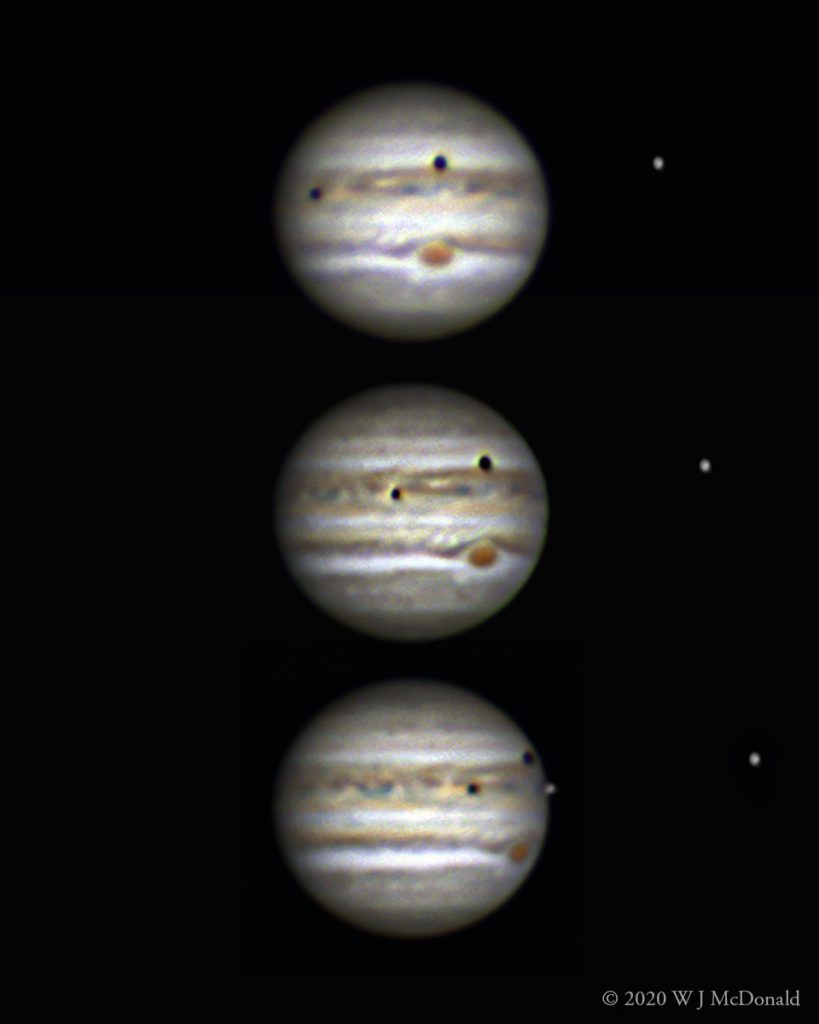
A Poetic Pelican by Doug MacDonald
A wonderful bird is the Pelican.
Dixon Lanier Merritt
His beak can hold more than his belly can.
He can hold in his beak enough food for a week!
I’ll be darned if I know how the hellican.
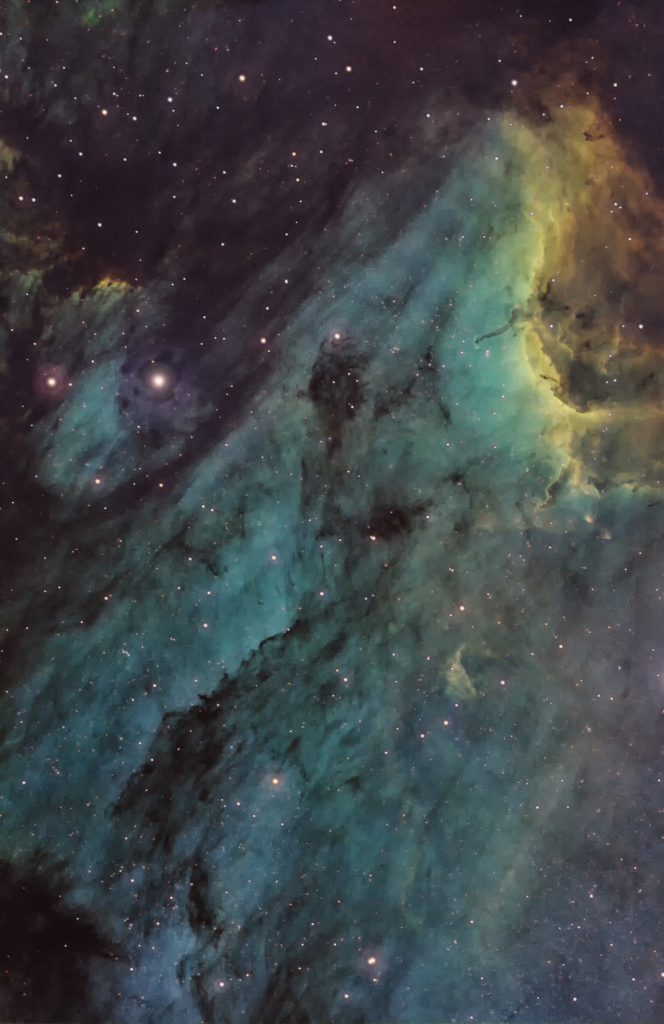
Shot this Aug. 9 – 13 with Bortle 6 skies. This bird lives in Cygnus, not too far from Deneb. I processed it in the SHO palette; it represents just over 8 hours of narrowband exposure with a 5″ refractor at f/5.5.
Final UVic Open House of the Summer is a Block Buster!
What happens when the largest objects in the Universe go face-to-face? Be sure to join UVic Phd Candidate Mallory Throp for this fascinating Zoom presentation that begins at 7:30PM on Wednesday August 26th. The zoom guest link (with password embedded) is: https://zoom.us/j/97173236268?pwd=V2hhYTAwVVY5cXl5eEFoOUxSYmZGdz09
Cosmic Collisions
Abstract: What happens when galaxies collide? Right now, the Andromeda Galaxy is hurtling towards us, on a direct collision course with our galaxy. Surely the Milky Way will not escaped unscathed? For almost a century astronomers have been trying to figure out what happens when galaxies clash, and from that investigation a harrowing tale of starvation, cannibalism, and complicated acronyms has arisen. With today’s massive telescopes and high-tech simulations, we can hope to understand what happens when the largest objects in the Universe go face-to-face. And perhaps we can predict how our galaxy will be changed for the better (or the worse)
Robotic Telescope Editing Contest for August: M82 the Cigar Galaxy
Instead of being a spectator you can be a participant! Click on the link to find how you can get your hands of the raw data for this fascinating galaxy. https://skynews.ca/introducing-the-rasc-robotic-telescope-editing-contest/
Imagine: 8 Hours of LRGB data and 7.5 Hours of Hydrogen Alpha! Check it out and remember the contest is Only in Canada … Pity!
Global Hands On Astronomy Conference 2020
Local Astronomical Education evangelist Sid Sidhu is enjoying this online conference that is currently under way. Click the link to learn more about the conference program: https://handsonuniverse.org/ghou2020/programme/
Youtube videos of many of the presentations will be made available here: https://www.youtube.com/user/GTTPGHOU
Edmonton RASCals Focus on the Deep Sky: relayed by Dave Robinson
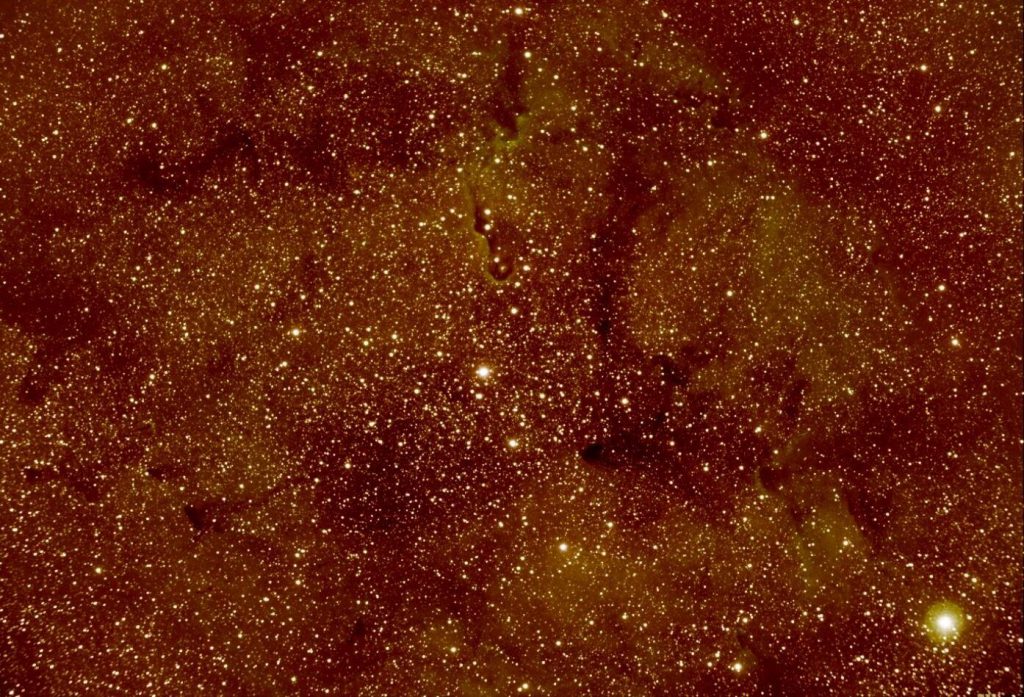
The star on the lower right is Herschel’s Garnet Star (Mu Cephei). It is a red supergiant – one of the largest stars known (it’s diameter is estimated to be larger than Saturn’s orbit). Equipment and details: Celestron RASA 8”Camera: ZWO ASI294 MC Pro (cooled to -16 C) 30s subs, 50 frames, 450 gain
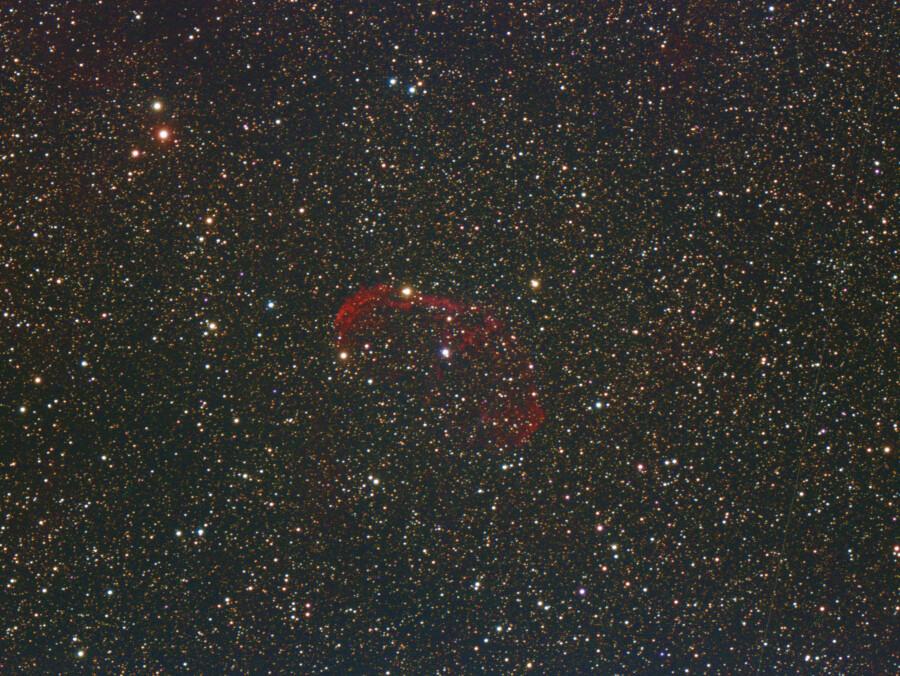
The large nebula in the centre is Sharpless 2-157 (The Lobster Claw Nebula), is described as a “ring nebula surrounding a Wolf-Rayet star (WR157, SAO 20512, mag 9.58)”. To the right edge of this image is NGC 7635 (The Bubble Nebula). Towards the bottom of the image is the small but relatively bright nebula NGC 7538 (in Cepheus), “home to the largest yet discovered protostar (~ 300 times the size of the Solar System)”.
In addition, there is a tight grouping of bright stars located just below Sh2-157 – open cluster NGC 7510.
Equipment and details: Celestron RASA8, ZWO ASI 294MC Pro ( -16C) 30sec subs, 50 subs.
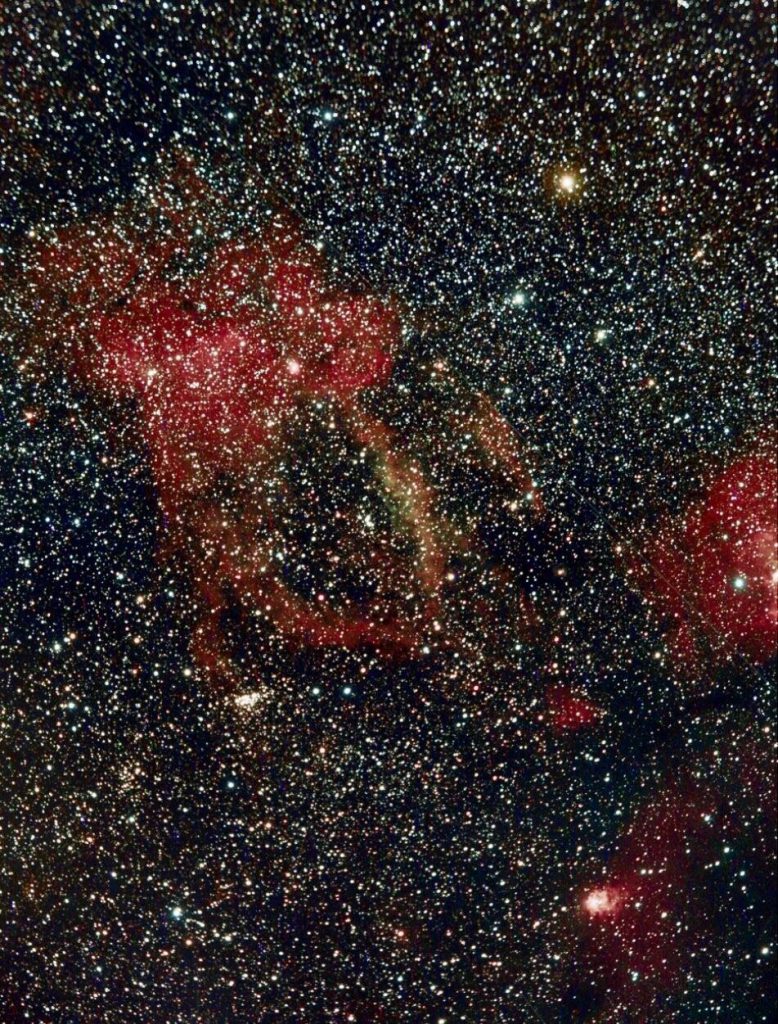
(The Flying Bat Nebula)
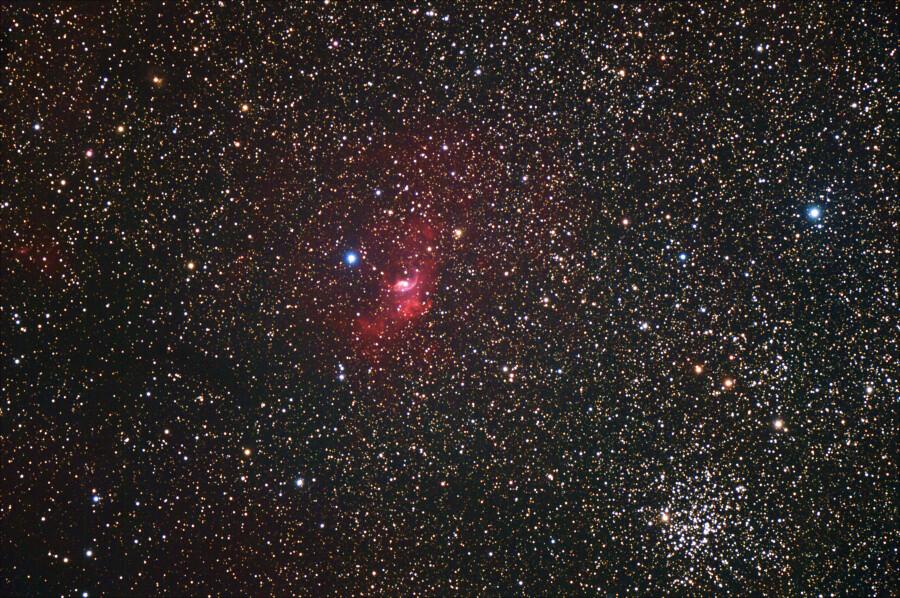
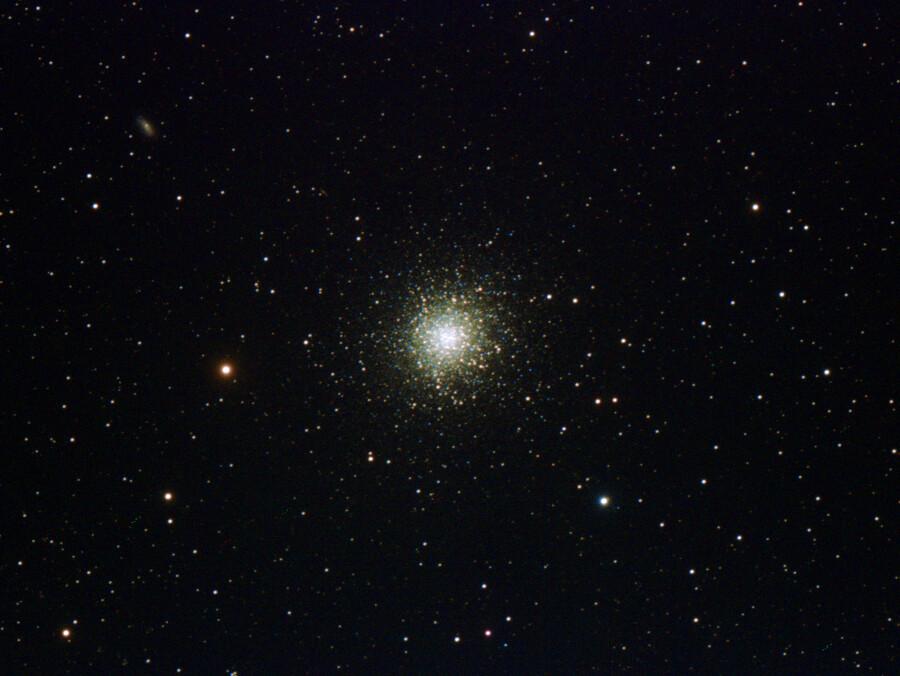
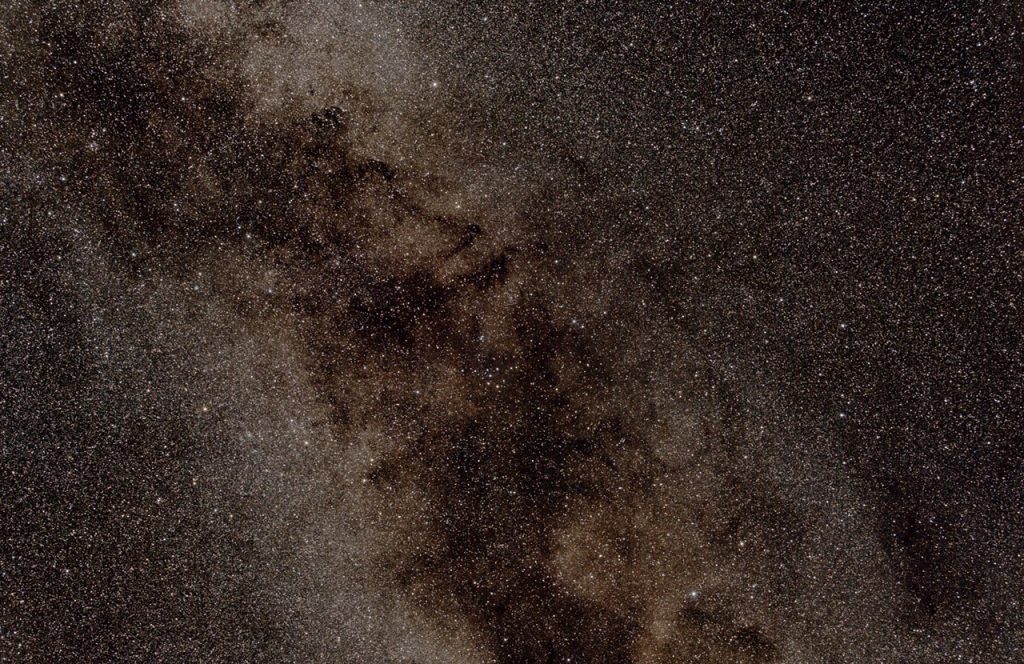
Channeling some E.E. Barnard last night at the microwave tower on the hill above the north shore of Pigeon Lake…. 70mm on full frame, and it is NOT Sagittarius or Scutum.
Press Briefing on Starlink and other mega-constellations
At 11AM on Tuesday August 25th the American Astronomical Society (AAS) and NSF’s NOIRLab will have a press briefing on the SATCON1 LEOsat mega-constellations workshop report. SATCON1 gathered astronomers, satellite operators, dark-sky advocates, policy makers, and other stakeholders to discuss, understand, and quantify the impacts of large satellite constellations on ground-based optical and infrared astronomical observations as well as on the human experience of the night sky. The briefing will be live-streamed on the AAS Press Office YouTube channel (https://www.youtube.com/c/AASPressOffice)
Observing
- This Week’s Sky – Skynews magazine
- This Week’s Sky At a Glance – Sky & Telescope magazine
- Explore the Universe Online – complete this observing program over the next few months, guided online by RASC’s Eric Wickham
- RASC’s Youtube channel has lots of content!
